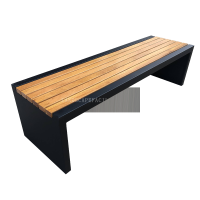Welcome to the website for landscape facilities products and knowledge.
How does the design of the trash can lid impact rainwater drainage and debris accumulation?
The design of a trash can lid plays a crucial role in managing rainwater drainage and preventing debris accumulation, directly impacting hygiene and usability. A well-designed lid typically features sloped surfaces or perforations to channel rainwater away, reducing pooling and potential leakage into the bin. Conversely, flat or poorly angled lids can trap water, creating a breeding ground for bacteria and unpleasant odors.
Additionally, the tightness of the lid’s seal affects debris accumulation. Loose-fitting lids allow leaves, dirt, and small animals to enter, while snug designs minimize external contaminants. Some modern lids incorporate mesh or vents to balance airflow and drainage, further reducing moisture buildup and debris retention.
Materials also matter—plastic lids may warp over time, compromising drainage efficiency, whereas metal or reinforced designs maintain structural integrity longer. For outdoor bins, choosing a lid with strategic drainage holes and a secure fit ensures better waste management and longevity.
Ultimately, the right lid design enhances functionality, keeping trash cans cleaner and more efficient in all weather conditions.
Related search:

Recommendation
Modern Stainless Steel Begonia Wood Park Chair Outdoor Courtyard Leisure Sun Protection Bench Long Seat